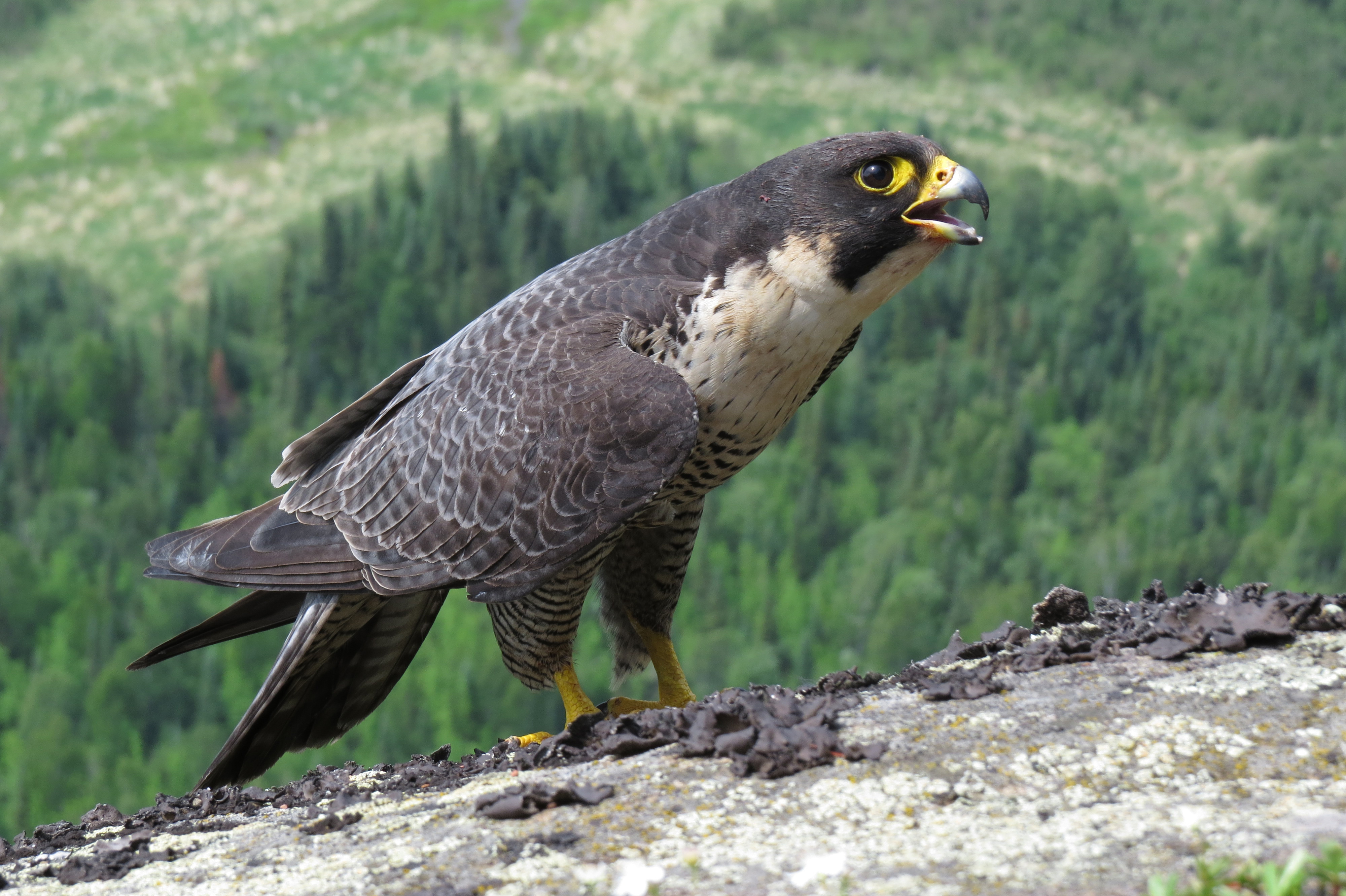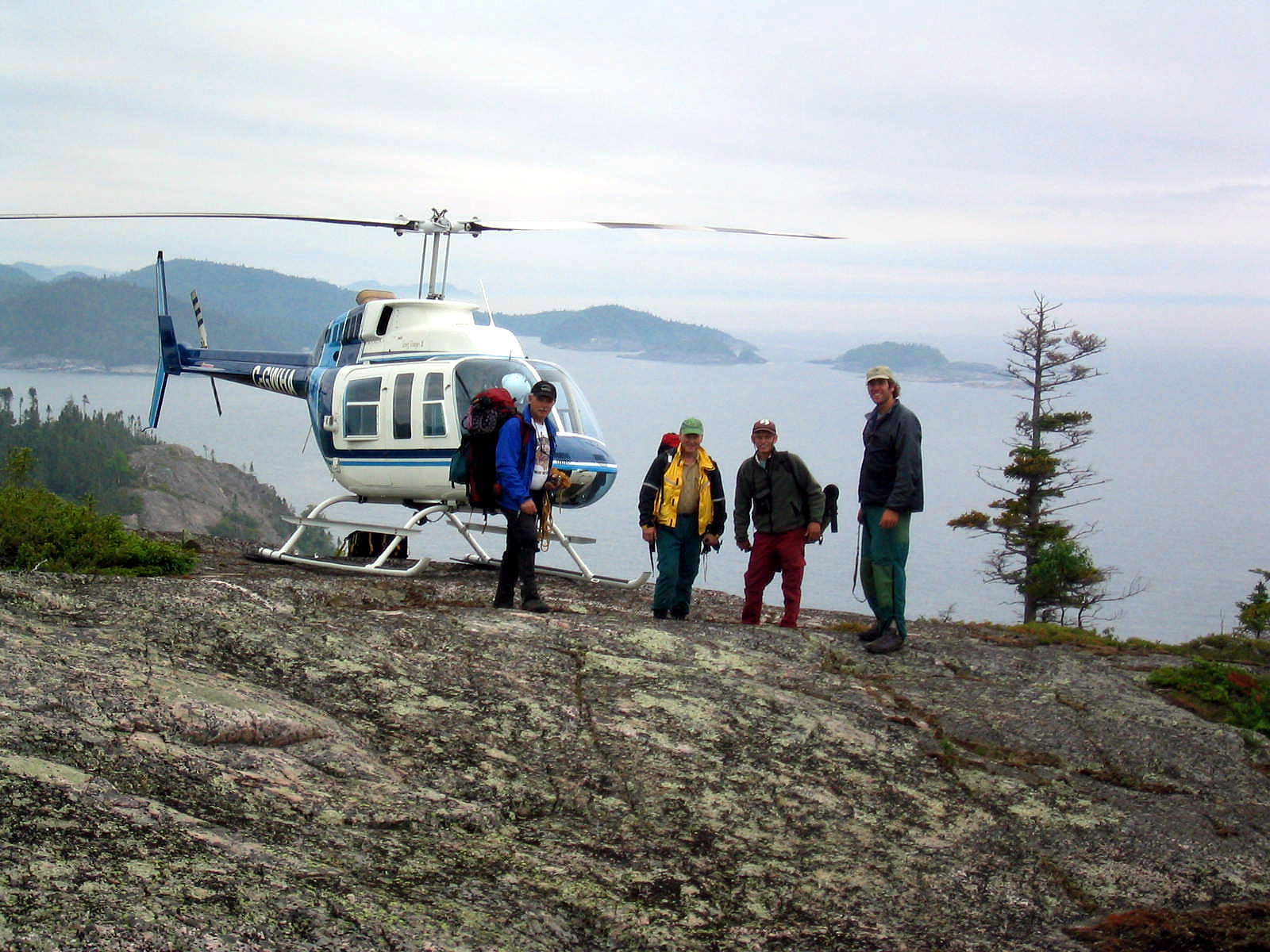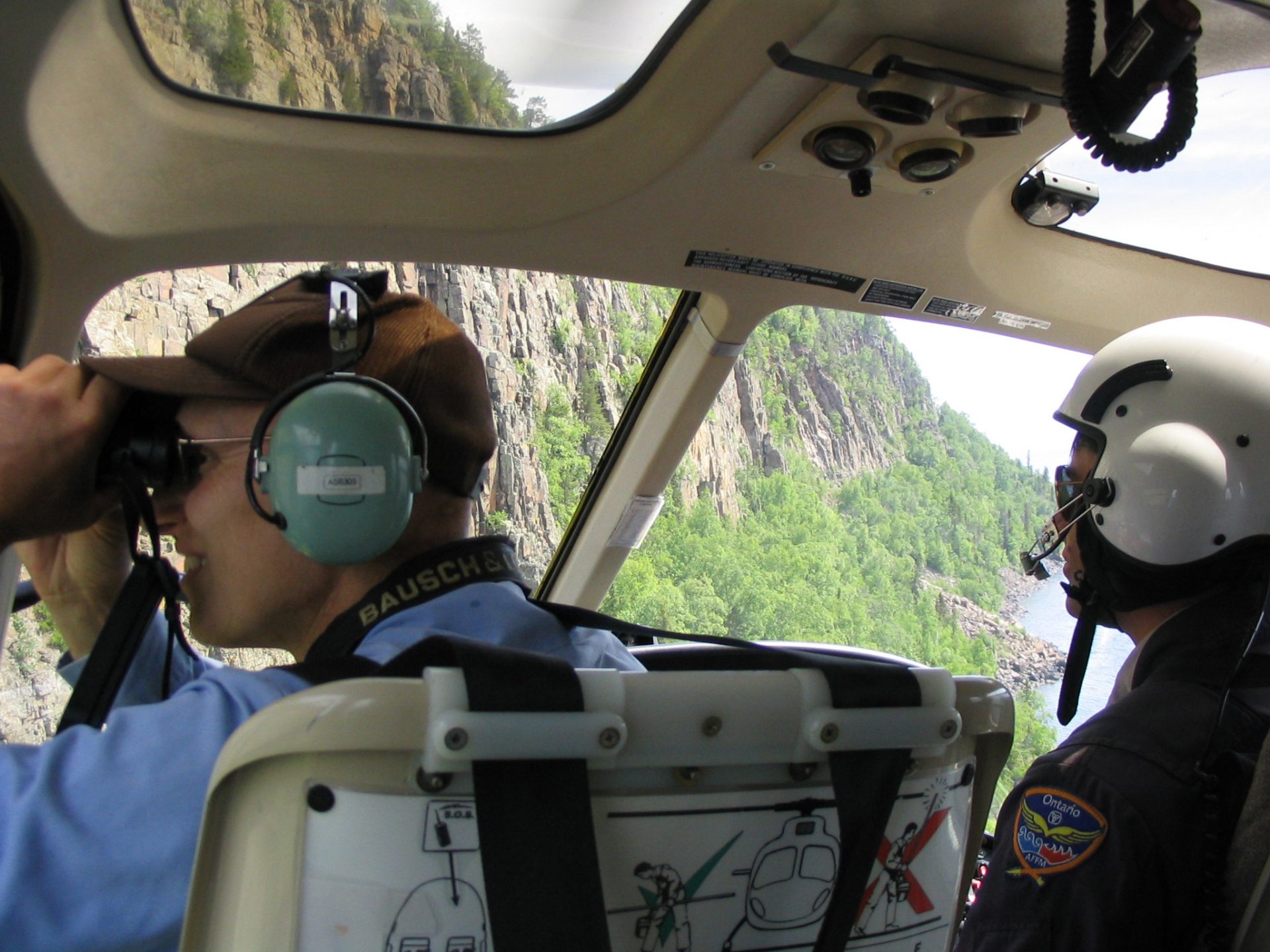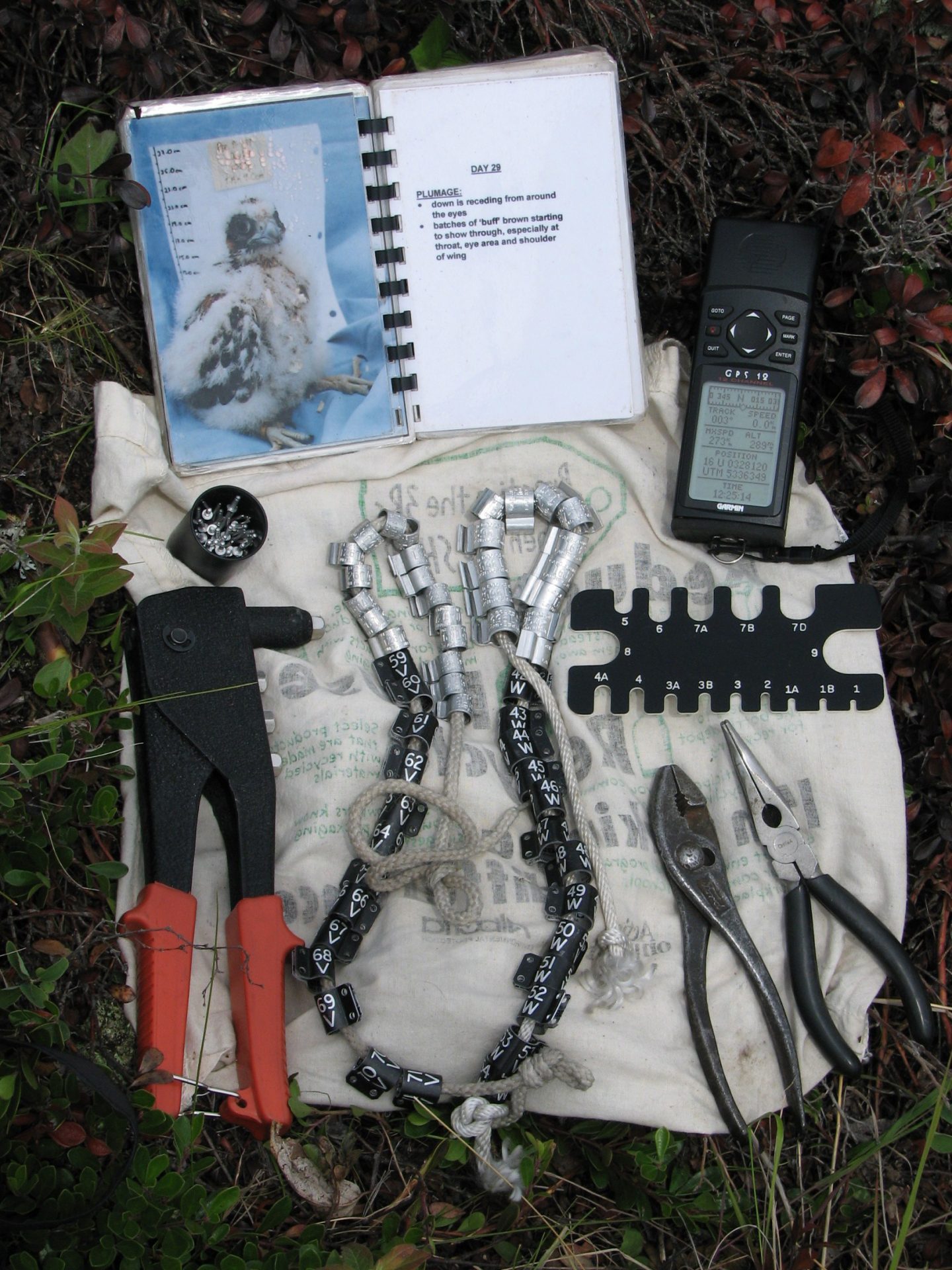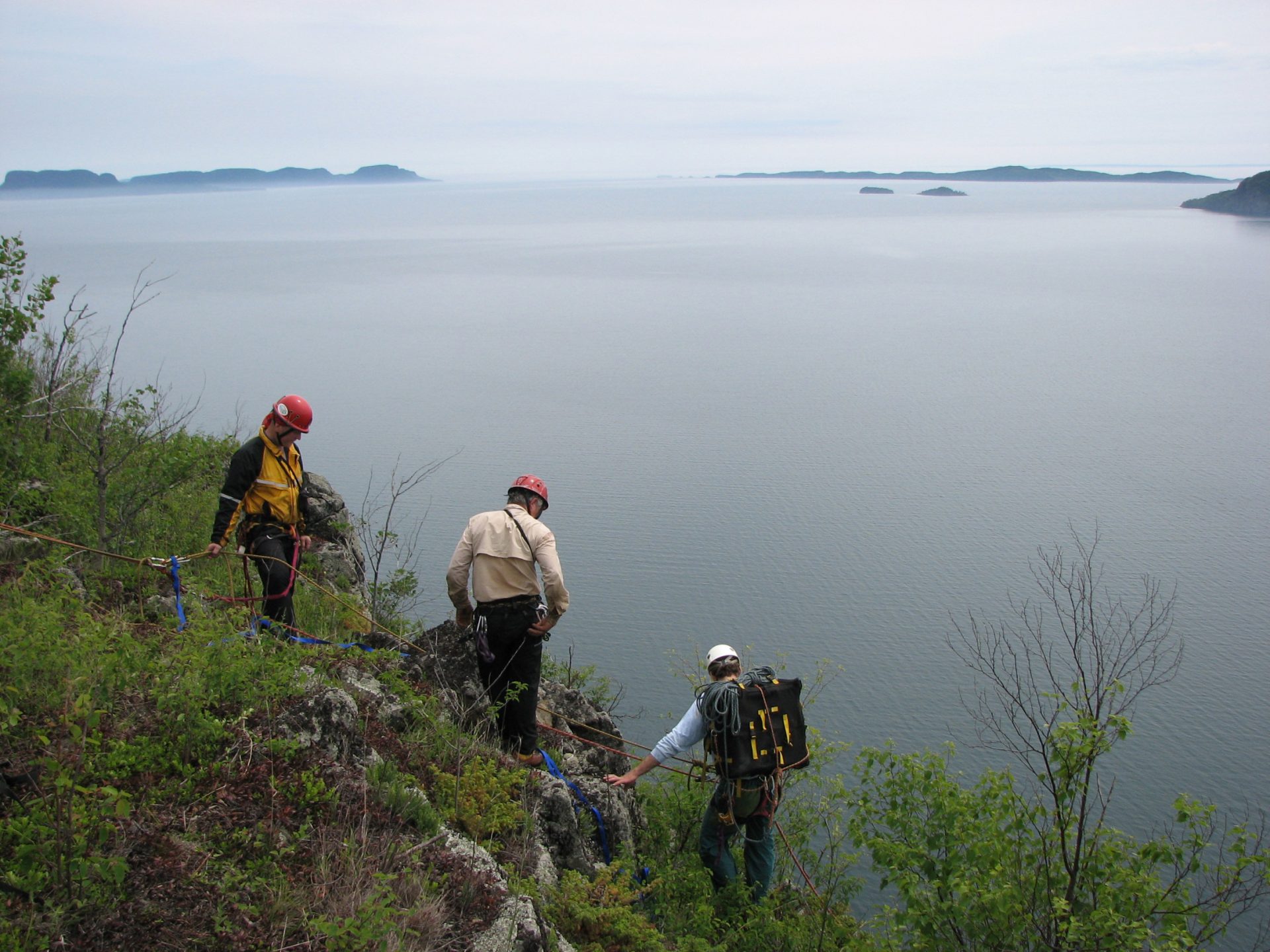Project Peregrine
Prior to the 1960s, the Peregrine Falcon, Falco peregrinus anatum, was a summer breeding resident of Lake Superior’s north shore. This continental subspecies vanished from their rocky eyries, primarily as the result of agricultural pesticides (DDT and its metabolites) in the environment. In 1973, the Canadian Wildlife Service and the University of Saskatchewan initiated the Peregrine Falcon Recovery Program. In 1989, the Thunder Bay Field Naturalists, with support from the Ontario Ministry of Natural Resources, launched Project Peregrine in an attempt to reintroduce this species to the Superior north shore.
Between 1989 and 1996, 87 young peregrines were hacked at Sturgeon Bay, Ruby Lake, and Sleeping Giant Provincial Park. Each year since 1990, Peregrine Falcons have been observed on territory in Thunder Bay District and in 1993, successful nesting peregrines were recorded for the first time in the last quarter century. Their return as a breeding species has been credited to active and intensive release programs both in Canada and the United States.
Since 1996, Project Peregrine has conducted a monitoring program to determine how many peregrine falcons are nesting within the Lake Superior Basin. Volunteers and Ontario Ministry of Natural Resources staff from Thunder Bay, Nipigon, Wawa, and Algoma Districts and Pukaskwa National Park check suitable habitat each year for nesting peregrines. Helicopter surveys, along with ground surveys are used to determine site occupancy, nest site location, and productivity. The number of territories has significantly increased since 1993, due to an abundance of excellent habitat, and the recovery of this species.
A banding program was initiated in 1996 to band young peregrines at cliff nesting sites. By identifying individual birds, we are able to determine where these birds winter, age of birds, and where they return to breed each year. The success of this project is made possible by enthusiastic climbers from the Alpine Club of Canada (Thunder Bay Chapter) and Lakehead University School of Outdoor Recreation Parks and Tourism who willingly walk off 125 metre cliffs and lower themselves to the nest ledge. Project Peregrine has been very successful as 613 young peregrines have been banded up to and including the 2018 field season. The banding program has come to a conclusion as of the end of the 2018 field season.
Peregrine Observations (click for more)
If you see a falcon that appears to be on territory, please contact the Project Peregrine coordinator, Brian Ratcliff (768-8408).
The most important observation details include:
- the specific location and date
- identification features of the bird
- information on the number of eggs and/or young
- any information on bands or band numbers, and
- the behaviour of the bird(s).
How to identify a Peregrine
The peregrine falcon is a fast-flying, crow-sized raptor with long, pointed wings, a long narrow tail, quick, powerful wingbeats, and a distinctive facial pattern with heavy dark “sideburns”. Adults are a dark slate-gray colour on the back, with a light-coloured barred breast, while younger birds are brown with a heavily streaked breast. They can often be identified by their distinctive call, which is a repeated “kek-kek-kek-kek”.
Peregrines are sometimes confused with the Merlin, another falcon found in the Thunder Bay District. Merlins are smaller and nest in trees instead of on cliffs, often in close proximity to human habitation.
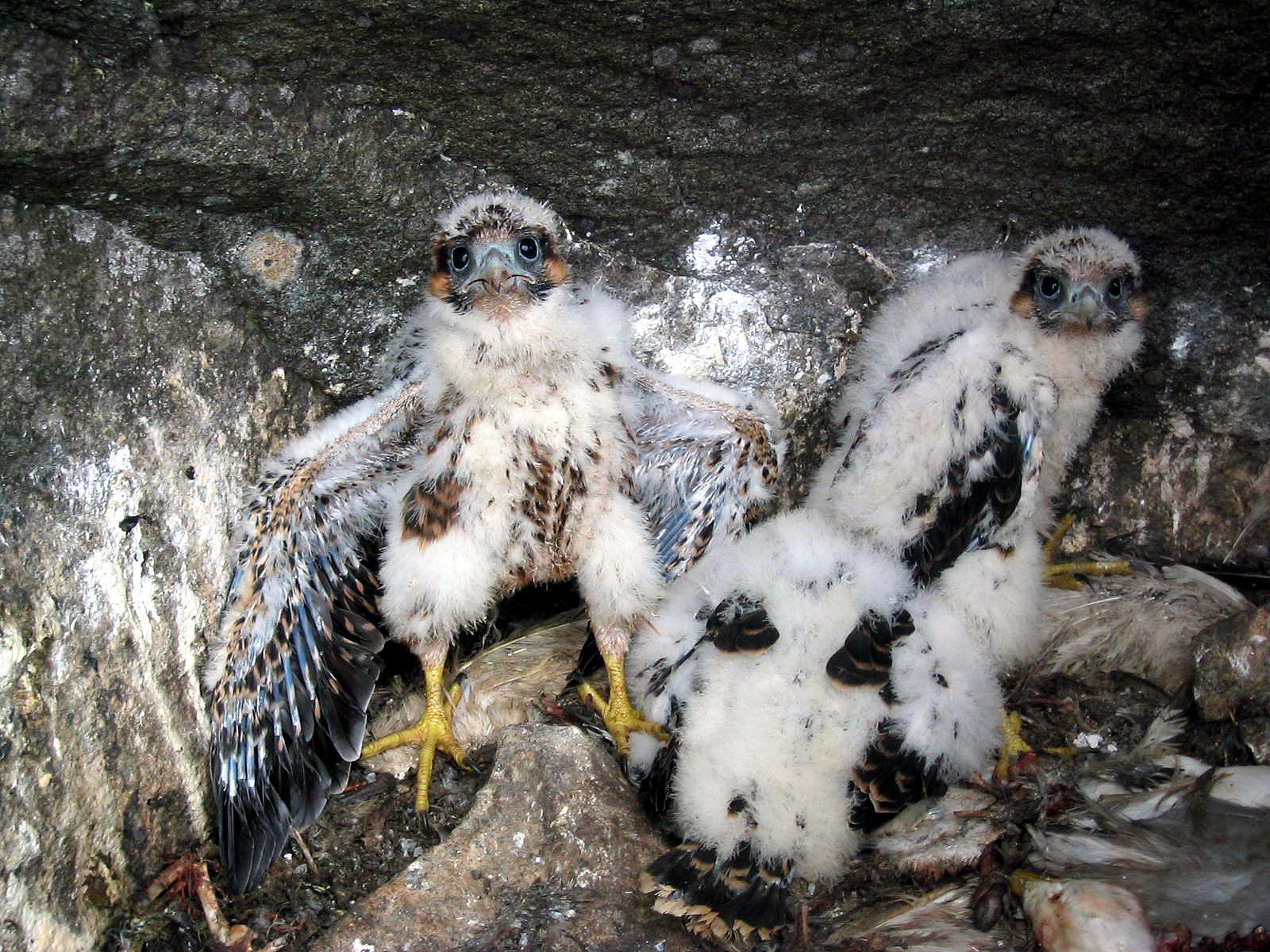
Photo (c) Leo Tardiff
Below Left: Otter Island Photo (c) Mike Dorval
Below Right: Scouting the Landscape Photo (c) Frank Pianka
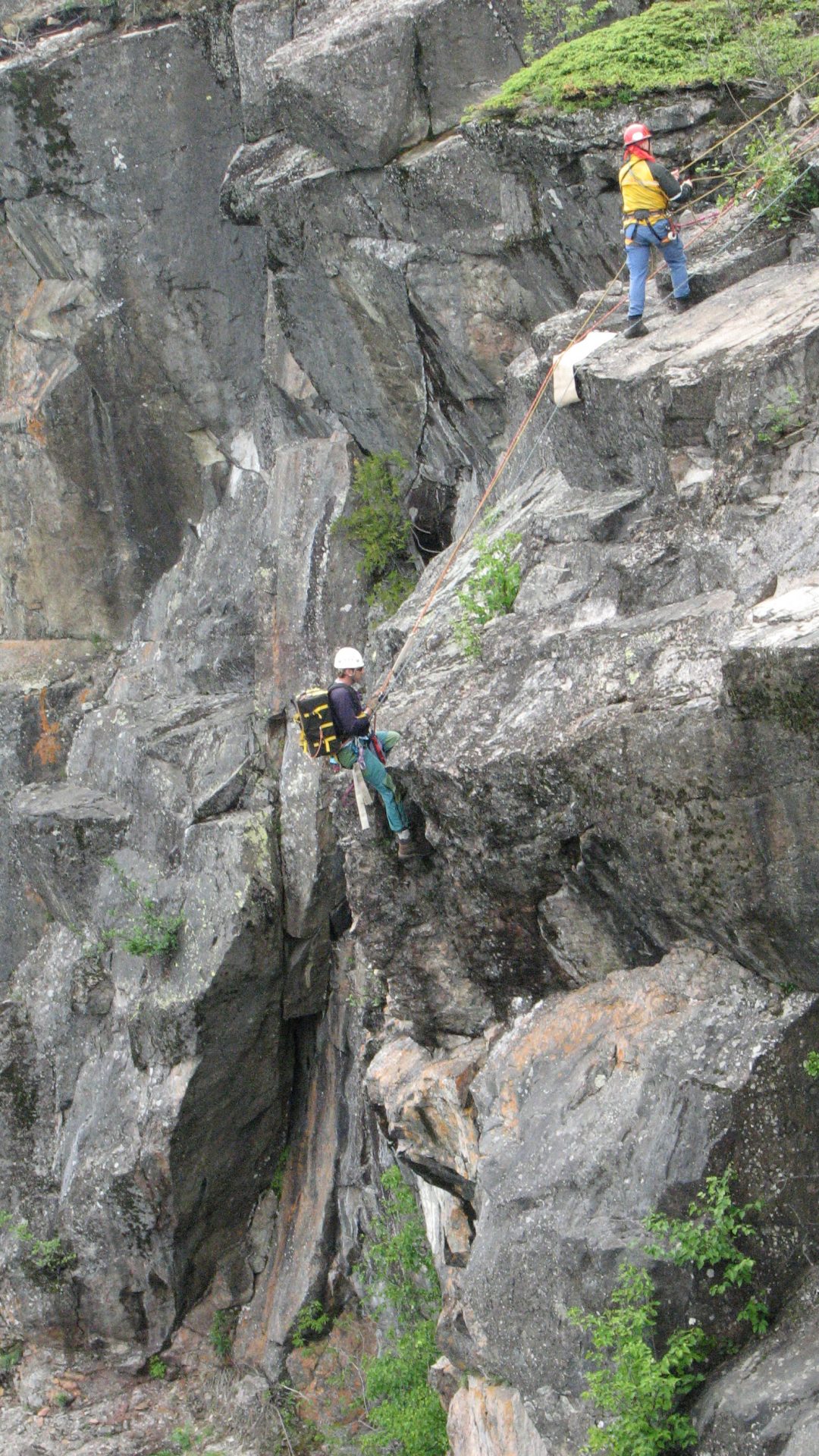
Photo (c) Brian Ratcliff
Below Left: Banding Tools Photo (c) Brian Ratcliff
Below Right: Mink Bay Photo (c) Brian Ratcliff
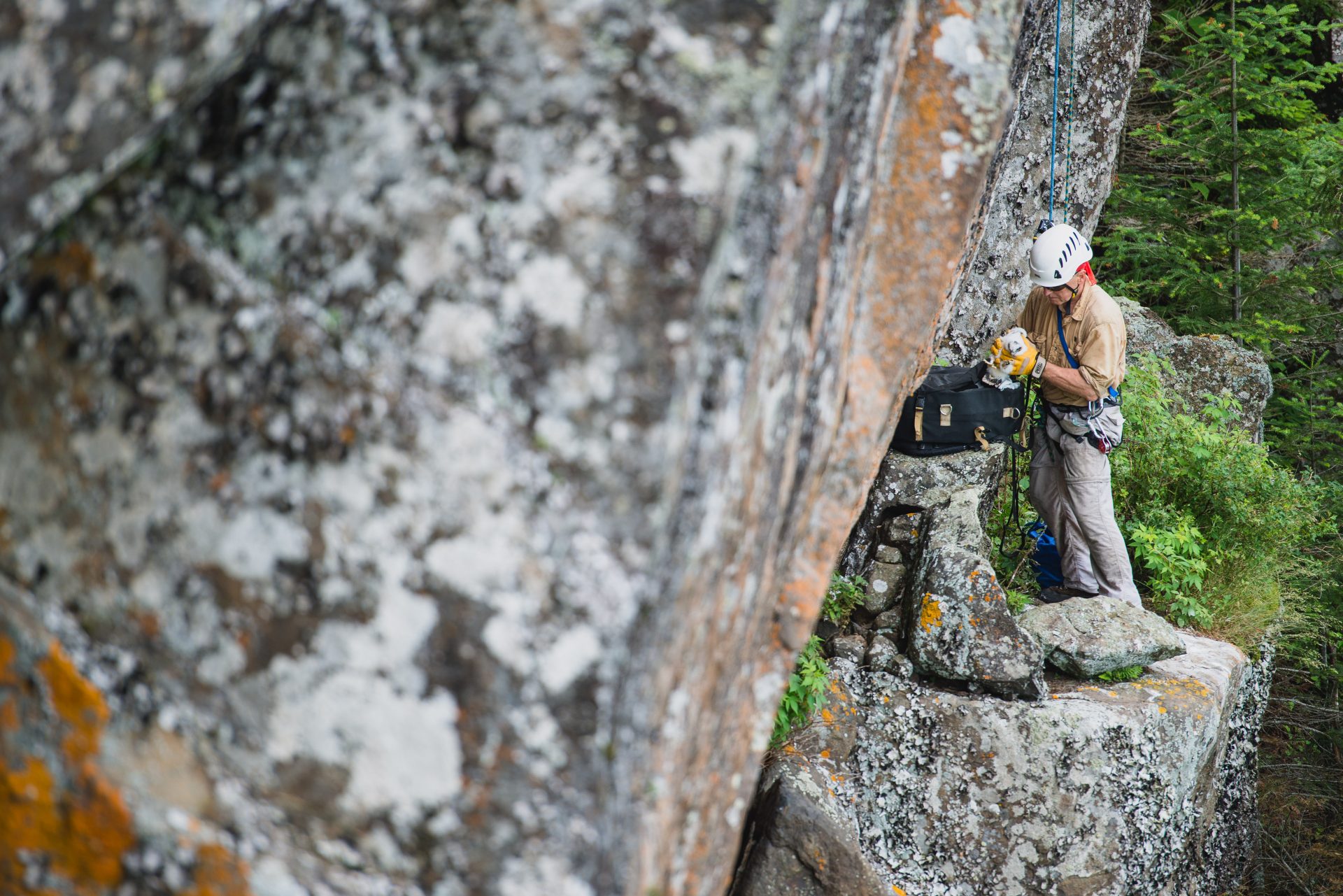
Photo (c) Mike Pianka

